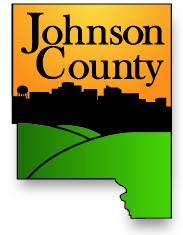Overview
This webpage provides general information on village planning; information on any active village planning is provided via this link: Click here to access information on the Windham village planning process.
Village planning helps small rural communities balance growth opportunities and preservation goals. It is an opportunity for area residents and property owners, other community members and the public to provide input that guides future village growth if and when it occurs. An adopted village plan plays a role in decision-making by the County’s Board of Supervisors, the Planning and Zoning (PZ) Commission, and the Board of Adjustment. At the direction of the Board of Supervisors, the Johnson County Planning, Development and Sustainability Department coordinates village planning efforts.
Eight of the nine unincorporated villages have completed the village planning process and have plans in place. Planning for Windham will launch on July 18. For each village, during the planning process, a backgrounder on the area history, village demographics, and current land uses will be drafted and made available for input and changes.
What A Village Plan Does
- Sets a vision statement and goals on topics such as quality of life, type and amount of growth, and infrastructure or services.
- Works in tandem with the County’s other planning guidance: the 2018 Comprehensive Plan and Future Land Use Map, and the 2022 Johnson County Economic Plan: Opportunities for the Unincorporated Area, Villages and Smaller Towns.
- Identifies village strengths and determines how to use those strengths and other resources to address village challenges.
- Preserves village historic character.
- Creates a village boundary and identifies areas where future growth may be appropriate.
- Respects property owner rights and boundaries.
- Protects agricultural land from development.
What A Village Plan Does Not Do
- Does not raise your taxes. Creating a plan creates opportunities for property owners, but does not change the tax classification or assessment of your property.
- Does not require you to change how you use your property or alter the current zoning of land. Any proposed zoning or use changes within the boundary still need to be initiated by the property owner and follow the typical application and review process.
- Does not promote immediate, large-scale development of land.
- Does not promote development that is disconnected from or out of character with existing land uses.
The Planning Process and Opportunities for Sharing Input
There are many opportunities for public input. Individuals can share their opinion regarding the future of the village by attending any or all of the meetings, or by email/phone.
- The first community meeting begins the process. PDS will use the input to create a first draft of the plan.
- A second community meeting focuses on solidifying the goals, vision and boundary in the draft plan.
- The public will be able to view the next draft in hard copy and online and provide comment prior to the public hearings with the PZ Commission and Board of Supervisors.
- The PZ Commission will discuss the draft, with time for public input. The meeting(s) will be announced. The commission votes on whether to recommend the plan, with or without changes, for the Board of Supervisors to adopt.
- Last, the Board of Supervisors will hold a public hearing, including time for public input, to consider adopting the plan. The date and time of the public hearing will be advertised in advance.
Existing Village Plans and Other Planning Guidance
View past village plans and the comprehensive plan here
View the economic development planning information here
Or visit our office at in the County Administration Building (second-floor) at 913 S. Dubuque Street in Iowa City to access these documents in person.
If you have any questions, please contact the Planning Office at 319-356-6083.
